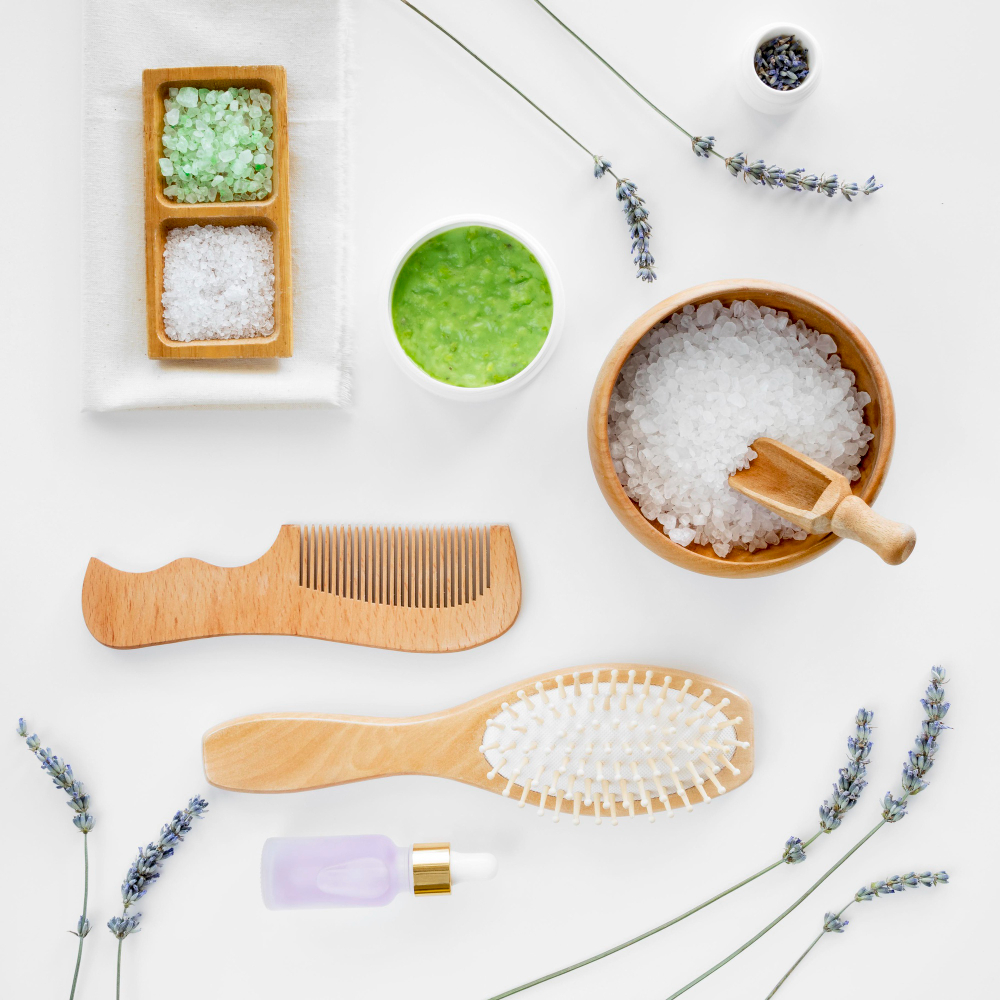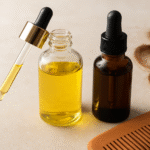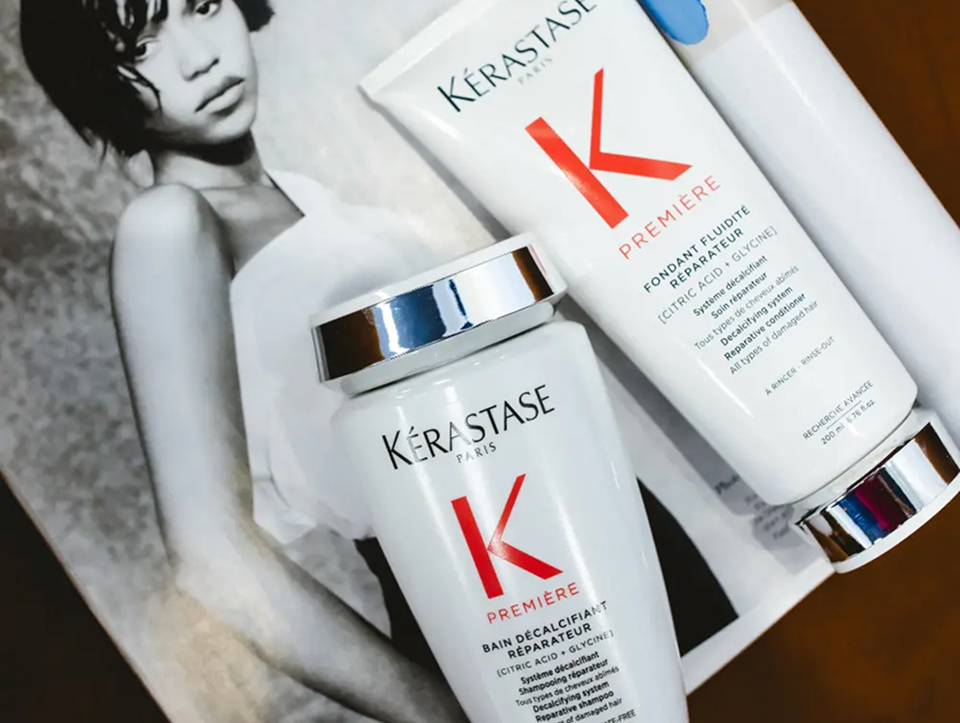At Haste Urban Hair Spa, we know that healthy hair starts at the root—literally. However, if your scalp feels oily, itchy, or your hair looks dull, regardless of the products you use, the real issue might be buildup blocking your hair follicles.
Over time, styling products, oil, and dead skin can clog your scalp, leading to dandruff, thinning, and even hair loss. That’s where scalp exfoliating scrubs come in.
These targeted treatments deeply cleanse your scalp, gently removing residue while stimulating blood flow and promoting stronger, shinier hair. Whether you’re dealing with flakiness, greasiness, or hair that won’t grow, this is your reset button.
Let’s dive into why scalp exfoliation is essential for hair wellness, how to do it right, and the top treatment options (including in-salon therapies like Malibu C).
What Is a Scalp Exfoliating Scrub & Why You Need One

Over time, your scalp can collect a buildup of dead skin cells and excess oil. At the same time, a buildup of products occurs when you use styling products. The buildup can clog hair follicles without regular exfoliation, leading to dandruff, hair thinning, and hair loss.
A scalp therapy scrub gently removes this buildup, promoting a healthier environment for hair growth, and also does wonders for combination hair. When you use a scalp exfoliating scrub at least once a week, it can help improve the health of your scalp by:
- Removing buildup: Scrubs help clear away dead skin cells, oil, and product residue.
- Boosting circulation: Massaging stimulates blood flow, encouraging healthier hair growth.
- Preventing dandruff: Exfoliation reduces the risk of flakes and itchiness.
- Enhancing hair health: A clean, nourished scalp produces stronger, shinier hair.
Additionally, you can also receive a hydration treatment to help alleviate dry hair. Read the inside news here.
How to Choose the Best Scalp Scrub for Your Hair Type

There’s no one-size-fits-all when it comes to scalp exfoliation. The right product depends on your hair type, scalp condition, and any sensitivities you may have.
- Oily scalp? Look for scrubs with salicylic acid or charcoal.
- Dry or flaky scalp? Opt for hydrating formulas with sugar, aloe vera, or jojoba oil.
- Sensitive skin? Choose fragrance-free, non-abrasive scrubs with calming ingredients like oat or chamomile.
- Curly or textured hair? Cream-based scrubs are gentler and more moisturizing.
For more information on using hydrating formulas such as oil for a dry or flaky scalp, check out our article here.
How is a Scalp Therapy Scrub Done?
You can use a scalp therapy scrub at home or visit a salon for a professional treatment.
Preparation: Start with wet hair to allow the scrub to spread quickly. Section your hair to ensure even application and focus on areas with more buildup, like the crown and around the hairline.
Application: Gently rub a small portion of the exfoliating scrub onto your scalp using your fingers. Perform this motion in circular motions, as it helps stimulate blood flow and distribute it evenly throughout the body. Be gentle to avoid irritating.
Massage: Continue massaging for about 2-5 minutes. This process helps to loosen dead skin cells, dirt, and product residue, leaving the scalp feeling refreshed and clean.
Rinse Thoroughly: Rinse your hair with lukewarm water to remove all traces of the scrub. The important thing is to ensure that your scalp has no residue left behind to prevent irritation.
Follow-Up Care: Cleanse and moisturize the hair with a gentle shampoo and a nourishing conditioner. This step helps lock in hydration and enhances the benefits of the scrub.
Dry and Style: Let your hair air dry or style it as desired. You will notice a cleaner yet lighter feel with increased volume and shine.
For a professional treatment, visit Haste Urban Hair Salon, where our experienced stylists can customize your scrub and technique to your specific scalp needs.
Who Should Use a Scalp Scrub? Is It Right for You?
A scalp therapy scrub is suitable for most people, but is especially beneficial for:
- Oily Scalps: Regular exfoliation can help keep your scalp balanced and prevent greasiness if you struggle with excess oil production.
- Experiencing Product Buildup: If you frequently use styling products like gels, mousses, or dry shampoos, a scrub can effectively remove residue and keep your scalp clean.
- Dandruff or Flakiness: A scalp scrub can help reduce flakiness. It removes dead skin cells to promote healthier hair.
- Experiencing Hair Thinning: Maintaining improved scalp health through exfoliation can encourage growth by creating a clean environment free from clogged hair follicles.
- Dry or Itchy Scalps: A gentle scalp scrub can alleviate itching and dryness by removing dead skin cells and enhancing moisture absorption.
When to Avoid Scalp Scrubs (Sensitive Scalp Warnings)
Scalp exfoliating scrubs have many benefits, but they are not suitable for everyone:
- Sensitive or Irritated Scalps: If your scalp is sensitive or you suffer from conditions such as psoriasis or eczema, we recommend consulting a dermatologist before using a scrub.
- Scalp Injuries or Open Wounds: If you have cuts, sores, or wounds on your scalp, it’s best to avoid scrubbing until they are healed, as exfoliation could cause further damage or infection.
What Is Malibu C Scalp Therapy & How It Works

Malibu C Scalp Therapy is a specialized scalp treatment designed to address issues such as itching, flaking, irritation, and scalp buildup.
It utilizes a unique formula that contains natural ingredients, including vitamin C, botanical extracts, and antioxidant-rich compounds.
The therapy gently detoxifies the scalp, removing impurities, product buildup, and environmental pollutants that can clog hair follicles and cause discomfort.
It is particularly effective because it is free from harsh chemicals like parabens, sulfates, and preservatives. It is gentle enough for all scalp types, including sensitive or easily irritated skin.
How is Malibu C Scalp Therapy Done?
You can perform the scalp exfoliating scrub at home and in a salon.
Preparation: Start by thoroughly wetting your hair with warm water. It helps open up the scalp’s pores, allowing the treatment to penetrate more deeply.
Mix the Treatment: Use the home kit to mix the powder with water until a paste-like consistency is formed. A professional stylist will prepare the mixture for you in a salon.
Application: Apply the paste directly to the scalp, focusing on areas that are particularly dry, itchy, or prone to buildup. Gently massage the treatment into the scalp using circular motions for approximately 2-3 minutes.
Processing Time: Leave the treatment 5-10 minutes to allow the active ingredients to work their magic. During this time, the formula detoxifies the scalp, removes impurities, and soothes irritation.
Rinse Thoroughly: Rinse the treatment with lukewarm water, removing all traces of the solution. After the initial cleansing, use a gentle shampoo to thoroughly clean the hair.
Condition and Style: Apply a nourishing conditioner to lock in the moisture and keep the hair hydrated. Then, style as desired.
Who Should Try Malibu C Scalp Treatments?
Malibu C scalp therapy is recommended for:
- Dry or Irritated Scalps: The treatment helps soothe irritated skin, making it ideal for those with itchiness or flakiness.
- Dandruff or Psoriasis: Its gentle, detoxifying formula helps alleviate flakiness and reduce inflammation associated with scalp conditions like dandruff or psoriasis.
- Exposure to Hard Water: It is particularly effective for individuals living in areas with challenging water conditions. This water can leave mineral deposits on the scalp and hair, leading to buildup and dullness.
- Experiencing Product Buildup: It removes residue from styling products, dry shampoos, and other hair treatments that can clog follicles and affect hair health.
Cautions Before Trying Malibu C Scalp Therapy
While scalp therapy is generally safe for most people, those with allergies to specific ingredients should carefully review the label to ensure their safety. People with severe scalp conditions should consult a dermatologist before using any new product.
What Is Scalp Therapy Shampoo & How to Use It

Scalp therapy shampoo is specially formulated to cleanse the scalp deeply while treating specific concerns such as dandruff, oiliness, itching, or flakiness.
It typically contains salicylic acid, tea tree oil, or zinc pyrithione to exfoliate dead skin cells, soothe irritation, and balance scalp oil levels.
The shampoo effectively washes and nourishes the hair, with a particular emphasis on promoting a healthy scalp. This is essential for fostering hair growth and ensuring overall hair health.
How is Scalp Therapy Shampoo Used?
Using the shampoo is simple and can be incorporated into your regular hair-washing routine. Here’s how to do it effectively:
Wet Hair Thoroughly: Start by wetting your hair with warm water. It helps open up the scalp’s pores, allowing the shampoo to work more effectively.
Apply Shampoo: To apply shampoo properly, start by placing a small amount in your palms and then apply it directly to your scalp. Use your fingertips to gently massage the shampoo into your scalp, creating a rich lather. Ensure that you cover the entire scalp area for effective cleaning.
Massage: Gently massage in circular motions for approximately 2-3 minutes. This action helps to exfoliate dead skin cells, remove buildup, and stimulate blood circulation, promoting a healthier scalp.
Rinse Well: Rinse thoroughly with lukewarm water, ensuring all shampoo is washed out. The residue left behind from the shampoo can cause dryness or irritation.
Follow with Conditioner: Use a hydrating conditioner to keep your hair soft and moisturized. Then, a conditioner is applied from mid-lengths to the ends.
Frequency of Use: Depending on your scalp condition, you may use Scalp Therapy Shampoo 2-3 times a week. For more sensitive scalps, once a week might be sufficient.
Who Benefits Most from Scalp Therapy Shampoo?
Scalp therapy shampoo is ideal for:
- Dandruff or Seborrheic Dermatitis: Its ingredients help control flaking and soothe the scalp, reducing dandruff symptoms.
- Oily Scalps: The shampoo helps balance excess oil production, preventing greasiness and maintaining a clean scalp environment.
- Experiencing Scalp Irritation: It is excellent for those who frequently experience itchiness or irritation, as it often contains calming agents like tea tree oil or aloe vera.
- Anyone Who Uses Styling Products Regularly: The shampoo effectively removes product buildup that can clog follicles and hinder hair growth.
Who Shouldn’t Use Scalp Therapy Shampoo?
Those with sensitive scalps should opt for a mild formula and avoid shampoos with high concentrations of active ingredients, such as salicylic acid, which can irritate the scalp. A patch test is advised before using any new product.
How Often Should You Use a Scalp Scrub?

Normal/oily scalp: Once a week
Dry or sensitive scalp: Every 2–3 weeks
Heavy product users: 1–2x per week
Over-exfoliating can strip the skin of its natural oils, so always follow with a moisturizer.
Signs Your Scalp Needs Exfoliation Now
- Your hair feels flat or greasy, even after washing.
- You notice flakes or itchiness on your scalp.
- You struggle with hair thinning or breakage.
- Your hair lacks shine or appears dull.
If any of these sound familiar, it’s time to give your scalp the love it deserves.
Ready to Refresh Your Scalp? Book with Us
A healthy scalp means better hair—fuller, shinier, and stronger. Whether you exfoliate at home or book a professional detox with Malibu C, regular scalp care can transform your hair journey.
✨ Book a scalp treatment at Haste Urban Hair Spa and let our experts reset your roots.
FAQ
What is a scalp exfoliating scrub, and how does it work?
The scalp exfoliating scrub helps remove dead skin cells, product buildup, and oil from the scalp. It typically contains gentle exfoliants, such as salt, sugar, or natural beads, that help cleanse and stimulate the scalp. When massaged into the scalp, the scrub boosts circulation, promotes hair growth, and enhances overall scalp health.
How often should I exfoliate my scalp?
Once a week is ideal. If your scalp is oily or you use a lot of products, washing it 1–2 times per week is acceptable, but avoid overwashing.
Can a scalp scrub help with dandruff?
Regular scalp exfoliation can help prevent dandruff by removing dead skin cells and buildup that contribute to flakes. It also maintains a healthy scalp, reducing itching and flakiness over time.
Is a scalp scrub safe for all hair types?
Scalp exfoliation benefits all hair types. Choose a gentle scrub with smaller exfoliants if you have fine or thinning hair. A more robust scrub can help tackle product buildup effectively for thick or curly hair.
Can scalp exfoliation help with hair growth?
Scalp exfoliation can promote hair growth by removing dead skin cells, unclogging hair follicles, and stimulating circulation. This can lead to healthier hair growth. However, it’s essential to exfoliate gently to avoid irritation.
Should I exfoliate my scalp before or after shampooing?
It is best to exfoliate your scalp before shampooing. This helps remove any buildup of dead skin cells and product residue, allowing the shampoo to cleanse the scalp better.
What should I do if I experience irritation after using a scalp scrub?
If you experience irritation after using a scalp exfoliating scrub, discontinue use and consult a dermatologist.









